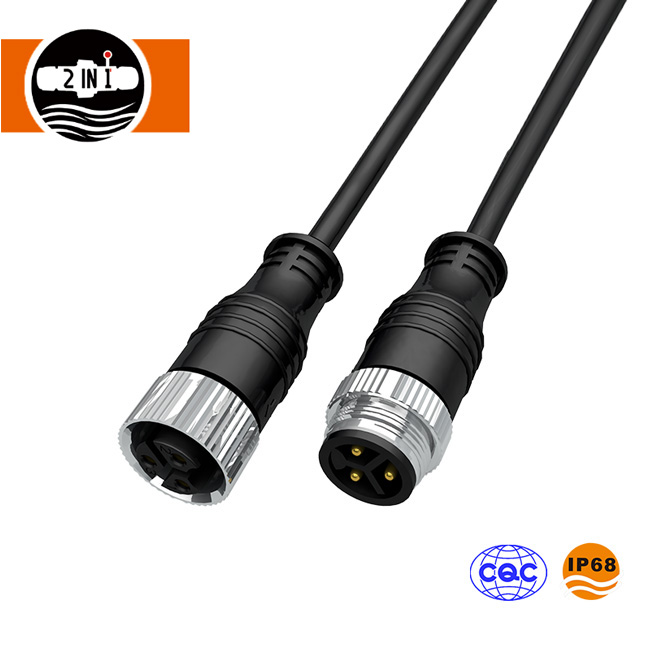Knowledge and Application of Waterproof Connectors
2024-06-15
Waterproof connectors are crucial for ensuring the reliability and safety of electrical connections in environments exposed to moisture or water. Understanding their knowledge and application involves knowing their types, design principles, and appropriate usage scenarios. Here’s a comprehensive guide:
Knowledge of Waterproof Connectors

Types of Waterproof Connectors
1. Gel-Filled Connectors:
- Description: These connectors are pre-filled with a water-repellent gel that surrounds the wire connections when the connector is closed.
- Application: Commonly used in telecommunications, outdoor lighting, and low-voltage applications.
2. Heat Shrink Connectors:
- Description: These connectors use heat shrink tubing with an adhesive lining that melts and seals the connection when heat is applied.
- Application: Used in automotive, marine, and industrial settings where durable and flexible connections are needed.
3. Crimp and Seal Connectors:
- Description: These connectors involve crimping the wire into place and then sealing the connection with a heat shrink tube or sealant.
- Application: Suitable for automotive and marine applications where a secure, vibration-resistant connection is required.
4. Molded Connectors:
- Description: These connectors are pre-molded and sealed during manufacturing, providing a robust and waterproof connection.
- Application: Used in harsh environments like underwater applications, outdoor power supplies, and industrial equipment.
5. IP-Rated Connectors:
- Description: Connectors rated with an IP (Ingress Protection) code, indicating their level of protection against solids and liquids.
- Application: Used in various applications based on their IP rating (e.g., IP67 connectors are dust-tight and can withstand immersion in water).
Design Principles
1. Sealing Mechanisms:
- Gaskets and O-Rings: Used to create tight seals around connection points.
- Adhesive Lining: Melts to form a seal around the wire and connector interface.
- Compression Fittings: Mechanically compress seals to prevent water ingress.
2. Materials:
- Durable Plastics and Rubbers: Resistant to UV light, chemicals, and temperature variations.
- Corrosion-Resistant Metals: Used in the contacts and connectors to ensure longevity and reliability.
3. IP Ratings:
- Understanding IP Codes: The first digit represents protection against solids, and the second digit represents protection against liquids (e.g., IP68 is dust-tight and protected against continuous immersion in water).
Application of Waterproof Connectors
Automotive Industry
- Wiring Harnesses: Used in engine compartments, undercarriages, and other areas exposed to water and moisture.
- Lighting Systems: Ensures reliability of headlights, taillights, and other exterior lights.
Marine Applications
- Boat Wiring: Protects connections from saltwater and moisture in both recreational and commercial boats.
- Underwater Equipment: Used in underwater cameras, sensors, and communication devices.
Outdoor and Industrial Environments
- Outdoor Lighting: Protects connections in streetlights, garden lights, and landscape lighting.
- Heavy Machinery: Ensures reliable connections in construction and agricultural equipment exposed to dust, water, and vibration.
Telecommunications
- Cable Splicing: Used in outdoor telecommunications cables to protect connections from moisture.
- Antenna Systems: Ensures reliable connections in outdoor antenna installations.
Installation and Best Practices
1. Preparation:
- Clean and Dry Wires: Ensure wires are clean and dry before making connections.
- Proper Stripping: Strip the wire insulation carefully to avoid damaging the wire strands.
2. Connection Process:
- Follow Manufacturer Instructions: Each type of connector has specific installation instructions.
- Use Proper Tools: Use crimping tools, heat guns, or other tools as recommended by the connector manufacturer.
3. Testing and Inspection:
- Visual Inspection: Check for proper sealing and no exposed wires.
- Electrical Testing: Test the connection for continuity and insulation resistance to ensure reliability.
4. Maintenance:
- Regular Inspection: Periodically inspect connections for signs of wear or damage.
- Replace Damaged Connectors: Replace any connectors showing signs of degradation or water ingress.
By understanding the types, design principles, and proper application of waterproof connectors, you can ensure reliable and safe electrical connections in environments where moisture and water are present. This knowledge is crucial for professionals in automotive, marine, industrial, and outdoor electrical installations.


